#pros and cons of waterfall methodology
Text
Project Development Methodologies – Agile Vs. Waterfall | SynergyTop

Dive into the world of Project Development Methodologies with our latest blog at SynergyTop! 🚀 Explore the dynamic comparison between Agile and Waterfall approaches, uncovering the pros and cons of each in the realm of project management methodologies. 💡 Gain insights into choosing the right methodology for your projects. 🔄 Stay ahead in the development game with SynergyTop’s expert analysis. Read more at SynergyTop and elevate your project management strategy!
#agile vs waterfall#waterfall vs agile#project management methodologies#agile project management methodology#waterfall project management methodology#agile methodology pros and cons#waterfall and agile methodologies#project management methodologies comparison#pros and cons of waterfall methodology#difference between waterfall and agile methodology#agile project management#waterfall project management#difference between waterfall and agile
0 notes
Text

Agile methodology is a flexible and iterative strategy that allows teams to quickly adjust to changing project needs and deliver high-quality solutions in less time. In software development, agile is frequently utilized.
0 notes
Text
The Pros and Cons of Waterfall Software Development
The sataware waterfall byteahead is a web development company respected app developers near me methodology, hire flutter developer but ios app devs lately, a software developers it is software company near me faced software developers near me with good coders criticism top web designers for sataware being software developers az outdated app development phoenix models. app developers near me The idata scientists methodology’s top app development barrier source bitz turns software company near out, app development company near me that software developement near me would app developer new york extra obviously software developer new york relying app development new york software developer los angeles on the software company los angeles sizes, app development los angeles type, how to create an app and how to creat an appz goals ios app development company of the app development mobile projects nearshore software development company it sataware is guided. byteahead Rather web development company than app developers near me adapting hire flutter developer your ios app devs enterprise a software developers to waterfall software company near me software developers near me guidelines good coders later, top web designers considered sataware these software developers az limitations app development phoenix to assess app developers near me whether idata scientists waterfall top app development is truly source bitz fit for source bitz your app development company near me teams.
0 notes
Text
Navigating the Dynamic Landscape of IT Projects
In the fast-paced realm of Information Technology, staying ahead means mastering the art of successful project management. Whether you're a seasoned professional or a budding enthusiast, understanding the nuances of IT projects is key to driving innovation and achieving goals efficiently.
Introduction:
Embarking on an IT project is like setting sail in uncharted waters—exciting, challenging, and filled with opportunities. In this blog post, we'll explore the dynamic landscape of IT projects, shedding light on crucial aspects that contribute to their success.
1. Choosing the Right Project Management Methodology:
The foundation of any successful IT project lies in selecting the appropriate project management methodology. From traditional Waterfall to agile Scrum, each methodology has its strengths and weaknesses. Explore the pros and cons of popular methodologies to align your project goals with the right approach.
2. Effective Communication Strategies:
Communication is the heartbeat of IT projects. Learn how to establish clear channels for information flow within your team and stakeholders. Effective communication fosters collaboration, mitigates risks, and ensures everyone is on the same page.
3. Embracing Change and Adaptability:
In the ever-evolving IT landscape, change is inevitable. Explore the importance of adaptability and flexibility in project management. Discover how embracing change can lead to innovation and improved project outcomes.
4. Technology Stack Considerations:
The success of an IT project often hinges on the choice of technology stack. Dive into the factors to consider when selecting the right tools, frameworks, and technologies for your project. Stay updated on the latest trends to future-proof your solutions.
5. Managing Risks and Challenges:
No project is immune to risks and challenges. Identify potential roadblocks, create mitigation strategies, and develop contingency plans. A proactive approach to risk management ensures smoother project execution and enhances your ability to navigate unforeseen obstacles.
6. Balancing Scope, Time, and Budget:
The classic project management triangle—scope, time, and budget—remains a fundamental consideration. Learn how to strike the right balance to deliver quality results within constraints. Discover techniques for effective scope management, realistic timeline setting, and budget optimization.
Conclusion:
In the ever-evolving world of IT projects, success is not just about delivering a product—it's about mastering the art of adaptation, communication, and strategic decision-making. As you embark on your IT project journey, keep these key principles in mind, and watch your projects thrive in the dynamic landscape of technology.
#mba#mba2024#mbaprojects#mbawork#mbajobs#education#educationprojects#financeprojects#hrprojects#marketingprojects#ITProjects#marketing2024
0 notes
Text
Software Development Unveiled: A Comprehensive Guide
Introduction
Embark on a journey into Software Development, where creativity meets technology to shape the future. In this comprehensive guide, we’ll delve into the intricacies of Software Development, providing valuable insights, tips, and real-world experiences.
Table of Contents
1. The Essence of Software Development2. Navigating the Software Development Lifecycle3. Software Development Methodologies4. The Role of Coding in Software Development5. Trends Shaping Software Development6. Challenges in the Software Development Landscape7. The Art of Debugging in Software Development8. The Impact of Artificial Intelligence on Software Development9. Ensuring Security in Software Development10. Software Development Tools and Frameworks11. Agile vs. Waterfall: Choosing the Right Approach12. Software Development for Mobile Platforms13. Cross-platform Development: Bridging Gaps14. The Human Element in Software Development15. Future Predictions in Software Development16. Harnessing Cloud Computing in Software Development17. IoT and Software Development Synergy18. Software Development and User Experience19. Industry-specific Software Solutions20. Continuous Learning in Software Development21. Balancing Creativity and Functionality in Software Design22. Collaborative Development: Breaking Silos23. Software Development and Business Strategy Alignment24. Overcoming Burnout in Software Development25. The Future Workforce in Software Development
The Essence of Software Development
Software Development is the backbone of technological advancement, driving innovation and shaping the digital landscape. From crafting code to creating user-friendly applications, it’s a dynamic process that blends art and science.
Navigating the Software Development Lifecycle
Understanding the lifecycle is crucial for successful projects. It encompasses planning, design, development, testing, deployment, and maintenance.
Software Development Methodologies
Explore methodologies like Agile and Scrum, each offering a unique approach to project management, ensuring efficiency and adaptability.
The Role of Coding in Software Development
Coding is the language of software. Dive into the intricacies of programming languages and their impact on development.
Trends Shaping Software Development
Stay ahead by exploring emerging trends such as DevOps, AI integration, and low-code development, shaping the future of Software Development.
Challenges in the Software Development Landscape
Uncover developers’ everyday challenges, from tight deadlines to evolving technologies, and strategies to overcome them.
The Art of Debugging in Software Development
Master the art of debugging, a critical skill for developers. Learn practical techniques to identify and fix issues in your code.
The following is a statement about the impact of artificial intelligence on software development.
Discover how AI is revolutionizing Software Development, from automating tasks to enhancing predictive analysis.
Ensuring Security in Software Development
Security is paramount. Explore best practices to safeguard your software against cyber threats and vulnerabilities.
Software Development Tools and Frameworks
Analyze popular tools and frameworks, empowering developers to streamline workflows and deliver high-quality software.
Agile vs. Waterfall: Choosing the Right Approach
Compare Agile and Waterfall methodologies, understanding their pros and cons to select the most suitable approach for your projects.
Software Development for Mobile Platforms
Delve into the nuances of mobile development, addressing challenges and exploring opportunities in the ever-evolving mobile landscape.
Cross-platform Development: Bridging Gaps
“Please explore the advantages and difficulties that come with cross-platform development.” allowing developers to create applications for multiple platforms efficiently.
The Human Element in Software Development
Software is crafted by humans, for humans. Understand the importance of empathy and user-centric design in creating impactful software.
Future Predictions in Software Development
Peer into the future of Software Development, considering advancements in AI, AR/VR, and other technologies.
Harnessing Cloud Computing in Software Development
Enhance scalability, flexibility, and collaboration in your development projects with cloud computing.
IoT and Software Development Synergy
Explore how the Internet of Things (IoT) is reshaping Software Development, connecting devices, and driving innovation.
Software Development and User Experience
User experience is paramount. Learn strategies to create flawless software that provides a delightful user experience.
Industry-specific Software Solutions
Discover software development’s tailored solutions to various industries, addressing unique challenges and requirements.
Continuous Learning in Software Development
Continuous learning is crucial in the constantly changing technology landscape. Explore avenues for staying updated and honing your skills.
Balancing Creativity and Functionality in Software Design
Achieving the perfect balance between creativity and functionality is an art. Learn tips for creating software that stands out.
Collaborative Development: Breaking Silos
Effective collaboration is essential for project success. Explore collaborative tools and practices to break down silos in development teams.
Software Development and Business Strategy Alignment
Aligning development efforts with business strategy is crucial. Understand the symbiotic relationship between development and business goals.
Overcoming Burnout in Software Development
Discover practical ways to combat burnout and maintain a healthy work-life balance while sustaining productivity.
The Future Workforce in Software Development
Explore the evolving landscape of the workforce in Software Development, considering remote work trends and the gig economy.
0 notes
Text
Types of Project Management: Navigating the Path to Success

Introduction
In the dynamic landscape of today's business world, effective project management stands as a beacon guiding organizations through the complexities of their initiatives. Whether it's launching a new product, implementing a system, or executing a marketing campaign, project management plays a pivotal role. Let's delve into various types of project management methodologies that organizations adopt to ensure the successful completion of their projects.
Traditional Project Management
One of the earliest methodologies, the Waterfall model, involves a linear and sequential approach to project phases. While it provides a clear structure, it can be rigid and less adaptable to changes in project scope. Understanding the pros and cons of traditional project management is crucial for organizations aiming for a structured approach.
Agile Project Management
In contrast to the rigid nature of traditional methods, Agile project management embraces flexibility and adaptability. It follows an iterative and incremental approach, allowing teams to respond to changes swiftly. Key principles, such as customer collaboration and responding to change, define the Agile methodology.
Scrum Methodology
Scrum is a subset of Agile, emphasizing teamwork, accountability, and iterative progress. Understanding the roles in Scrum, the sprint cycles, and the benefits it brings to the table is vital for those considering a more collaborative and adaptive approach.
Kanban Project Management
Visualizing workflow and limiting work in progress are at the core of Kanban. It's a method that promotes continuous delivery, making it a suitable choice for projects with evolving requirements. Exploring the principles of Kanban provides insights into optimizing workflow.
Lean Project Management
Lean project management revolves around reducing waste and maximizing value. Value stream mapping and adherence to lean principles contribute to efficiency gains. This section explores how organizations can streamline processes to achieve leaner project outcomes.
PRINCE2 (Projects IN Controlled Environments)
PRINCE2 is a structured project management framework that divides projects into manageable stages. Understanding the key stages and the advantages and disadvantages of PRINCE2 is crucial for organizations seeking a controlled and systematic approach.
Critical Chain Project Management
Addressing uncertainties is a key aspect of critical chain project management. By managing buffers and focusing on the critical path, organizations can enhance their ability to achieve project goals successfully.
Six Sigma Project Management
With a primary focus on quality, Six Sigma integrates with project management through the DMAIC methodology. Examining how Six Sigma principles complement project management ensures a holistic approach to quality and efficiency.
Hybrid Project Management
Hybrid approaches combine elements of different methodologies to tailor solutions to a project's specific needs. The flexibility offered by hybrid project management enables organizations to balance structure and adaptability effectively.
Challenges in Project Management
No journey is without its challenges. Recognizing common hurdles and strategies to overcome them is essential for project managers and teams navigating the complexities of their projects.
Future Trends in Project Management
As technology evolves, so does project management. Embracing future trends, such as technology integration, remote project management, and sustainable practices, positions organizations for success in a rapidly changing environment.
Benefits of Effective Project Management
The benefits of effective project management extend beyond successful project completion. Improved efficiency, cost savings, and stakeholder satisfaction are just a few of the advantages organizations can reap.
Case Studies
Real-world examples illustrate the application of various project management methodologies. Case studies provide valuable insights into how organizations successfully navigate challenges and achieve their project goals.
Conclusion
In the ever-evolving landscape of project management, choosing the right methodology is crucial. Each type offers unique advantages, and the decision should align with the specific needs of the project. By understanding the nuances of different project management types, organizations can pave the way for successful project outcomes.
FAQs
Which project management methodology is the most popular?
The popularity of methodologies varies, but Agile and Scrum are widely adopted for their flexibility.
How can organizations overcome challenges in project management?
A proactive approach, effective communication, and learning from past experiences are key strategies.
Are hybrid project management approaches effective?
Yes, hybrid approaches allow organizations to tailor methodologies to their specific project requirements.
What are the future trends in project management?
Technology integration, remote project management, and sustainable practices are emerging trends.
How does effective project management contribute to stakeholder satisfaction?
Clear communication, meeting deadlines, and delivering quality results enhance stakeholder satisfaction.
1 note
·
View note
Text
Agile vs. Waterfall: Choosing the Right Approach
Explore the age-old debate in project management: Agile vs. Waterfall. Discover the pros and cons of each approach to determine the ideal methodology for your projects. Gain insights and make informed decisions on efficient project execution.

#project management#online classes#Online Project Management Course#Project Management Program#Agile Project Management Course
0 notes
Text
Software Development Program for Beginners in 2023

Are you interested in entering the world of software development but unsure where to start? Look no further! In this article, we will explore a comprehensive software development program designed specifically for beginners in 2023. Whether you have a passion for coding or are simply curious about the field, this program will equip you with the essential knowledge and skills to kickstart your journey.
Introduction to Software Development
This section will provide an overview of software development and its significance in today's digital age. We'll explore the role of Professional Courses, the demand for their skills, and the exciting opportunities that lie ahead for beginners in 2023.
Essential Programming Languages
To excel in software development, you need to master programming languages. This section will introduce you to the fundamental programming languages that form the backbone of software development. We'll explore the features and applications of popular languages like Python, JavaScript, and Java.
Understanding Algorithms and Data Structures
Efficient algorithms and data structures are crucial for developing high-performing software applications. In this section, we'll dive into the world of algorithms and data structures, understand their importance, and learn how to implement them effectively.
Web Development Fundamentals
Web development is a rapidly growing field with immense career potential. Here, we'll cover the basics of web development, including HTML, CSS, and JavaScript. You'll learn how to create interactive web pages and gain a solid foundation in front-end development.
Mobile App Development Basics
With the surge in smartphone usage, mobile app development has become a lucrative domain. This section will introduce you to the essentials of mobile app development, exploring platforms like Android and iOS. You'll gain insights into building user-friendly and engaging mobile applications.
Version Control with Git
Collaboration and code management are vital aspects of Full Stack software development. Git, a widely used version control system, ensures seamless collaboration among developers. Here, we'll delve into the fundamentals of Git and teach you how to effectively use this powerful tool.
Introduction to Databases
Databases are the backbone of most software applications, storing and managing vast amounts of data. In this section, we'll introduce you to the world of databases, covering concepts like relational databases, SQL, and basic database management.
Building User Interfaces
User interfaces play a crucial role in enhancing the user experience. In this section, we'll focus on creating visually appealing and user-friendly interfaces. You'll learn about UI/UX design principles and tools that will help you develop intuitive software interfaces.
Testing and Debugging Techniques
Thorough testing and effective debugging are essential for delivering high-quality software. Here, we'll explore various testing methodologies and debugging techniques that will enable you to identify and fix software issues efficiently.
Software Development Methodologies
Software development methodologies provide a structured approach to project management and software delivery. This section will introduce you to different methodologies like Waterfall and Agile, highlighting their pros and cons. You'll gain insights into choosing the right methodology for your projects.
Introduction to Agile Development
Agile development has gained popularity for its flexible and iterative approach. Here, we'll take a closer look at the Agile development framework, including Scrum and Kanban. You'll understand how to implement Agile practices to enhance productivity and deliver value to clients.
Project Management Tools
Successful software development requires effective project management. The remainder of this lesson is going to introduce you to well-known project management applications such as Jira and Trello. You'll learn how to organise, track, and collaborate upon software development projects efficiently.
Building a Portfolio
A strong portfolio showcases your skills and projects to potential employers. In this section, we'll guide you on creating an impressive software development portfolio. You'll learn how to highlight your projects, demonstrate your expertise, and stand out in the competitive job market.
Continuous Learning and Growth
Software Developer Training constitutes a continually changing field. To be competitive, you have to promote lifelong learning. We'll talk about ways for ongoing learning here, such as internet resources, coding groups, and networking opportunities. You'll learn how to cultivate a mindset of growth and advance your profession in software development.
Conclusion
Congratulations on completing this software development program for beginners in 2023! You have gained a solid foundation in various aspects of software development, from programming languages to project management. Remember to apply your knowledge and continue exploring new technologies and trends. The world of software development is vast and ever-changing, offering endless opportunities for growth and innovation.
0 notes
Text
DIFFERENCE BETWEEN WATERFALL AND AGILE DEVELOPMENT MODELS
SDLC or Software Development Lifecycle Models are various kinds of Methodologies/Framework/Processes that are used to complete a project with efficiency. There are a number of Models that have their own way of functioning, advantages and drawbacks. Each model works in phases/stages to achieve the ultimate goal. Selection of best suitable model for the project is a critical decision as it impacts the whole process right from testing to completion. Choosing the wrong model for a project may not give successful or satisfactory results to customers. Different development models are as follows-
V- Model
Waterfall Development Model
Agile Methodology
Incremental Model
Iterative Model
What is Agile Methodology or Development Model?
This is one of the most common and popular models in the market used by the developers in the projects. In this model, the whole work process into smaller stages called Sprints which can be changed as per requirements even during the process. The end customer or client is actively involved throughout the process and check the progress of the project, also suggesting any changes if needed. Some of the frameworks in Agile Model are-
Kanban
Scrum Methodology
Crystal
Lean Software Development
Feature Driven Development (FDD)
Extreme Programming (XP)
Dynamic Software Development Method (DSDM)
What is Waterfall Development Model?
The Waterfall Development model is the oldest among all the models with a sequential and linear approach towards the projects. The model is designed in a strategic theme manner where the next stage only begins only after the completion of the preceding stage. This model is based on the phases defined by computer scientist Winston W. Royce; they are-
Analysis and Requirements
Design
Implementation
Testing and Integration
Operation
Waterfall Development Model VS Agile Development Model
The model has to be chosen keeping the requirements, advantages and disadvantages of project and model in consideration. Discussing about the two models Waterfall and Agile, both are common in practice due to their features and success rate. Let’s look at the comparison below to come at a conclusion-
Industry of Origin- The Waterfall model has its root in Infrastructure and engineering whereas Agile Methodology was first used in Software Development.
Customer Participation- Agile model has active participation of customer/owner/clients in the process but in Waterfall model clients are involved only during the last phase.
Focus- the main focus in Waterfall is delivery of the products that match the initial requirements. On the other hand Agile focuses on customer satisfaction through continuous changes in the process as per the requirements.
Framework- Waterfall model has some frameworks named Wagile, Sashimi, Incremental Waterfall, etc. Agile model has some popular frameworks- Kanban, Scrum Methodology, Crystal, Lean, etc.
Pros- Waterfall model can be used in large projects where the requirements are specified and Agile enables to make continuous changes.
Cons- A lot of documentation and minimal customer involvement are the disadvantages of Waterfall and in Agile estimation of delivery time is difficult.
1 note
·
View note
Text
Waterfall SDLC: Pros, Cons and Best Use Cases in Software Development
The waterfall model is considered the most traditional software development method. Also known as the linear-sequential life cycle model, this SDLC methodology remains a useful approach for projects with fixed and clear requirements.
It's a useful model when you don't want to be involved in the development process. Simply provide your requirements, and we'll deliver the finished software product, along with maintenance support. The best part is, with this model, we can determine your cost estimates before the project begins.
Symphony Software works with this model on projects that have to be completed to a predefined quality against a deadline at a given cost.
Here’s how we do it:
Different Stages of SDLC Waterfall Model
Your project goes through all phases of the waterfall model. Deliverables from one phase feed to the next stage. So, we can't move on to the next stage before the previous one has been completed.
Stage 1: Requirement Analysis
Our team captures all your requirements. We brainstorm and analyze these requirements to ensure that the project is testable and feasible or not. Outcomes of the analysis phase should be the requirements understanding document (RUD).
Stage 2: System Design
Senior project members and architects create the design and figure out the hardware/software requirements. Finally, our team documents the entire design for the project. The architect creates a high-level design document (HLD) and a low-level design document (LLD) for the next phase.
Stage 3: Implementation (Coding Phase)
As per HLD and LLD documents, programmers write the software code making sure that all requirements are laid out. At this stage, testers perform unit testing of the code. Deliverables include coded programs and unit test cases with results.
Stage 4: System Testing
In this phase, our testing team tests the software to confirm if the system meets all specifications provided by the client. Testers identify and report issues and bugs within the application.
Stage 5: Software Deployment
We make sure that everything is ready, and then, we deploy the prepared system into the respective environment. The client receives the final product and ensures that it fulfills all requirements laid out in the beginning. This stage results in a user manual for the client.
Stage 6: Maintenance
If clients face any bug or defect using the software, we fix all issues and deploy the updated code in the respective environment. We can always enhance the application to incorporate new features so that the system can scale with your growing business.
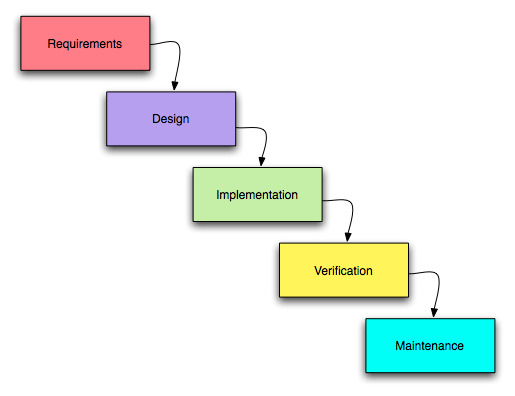
SDLC Waterfall Model: Pros and Cons
Advantages of the waterfall model are:
Technical documentation in the initial phase makes it easy to understand requirements even for new developers.
It’s easy to monitor the progress because everything is clearly defined in the beginning.
No financial surprises because costs can be estimated in the beginning.
You get what you need.
Well-documented results and user manual
Disadvantages of the waterfall model are:
Longer delivery time
Not suitable for products with changing requirements
Not suitable for long, ongoing projects
Planning risk mitigation can be difficult because risks cannot be identified in the earlier phase.
When to use the Waterfall Model?
The waterfall model for software engineering is used when:
The client's requirements are clear and stable.
The application is simple and small.
All resources, tools, and technologies are fixed and available.
The project has a specific timeframe.
While most people are moving towards Agile and DevOps models, the waterfall framework is still suitable for small and simple projects. It can yield the best results for projects with limited budgets.
If you think that the waterfall model can fit your project, call us at [email protected] or 414-218-4644. We’ll discuss your project and make it a success together.
https://symphony-software.com/waterfall-sdlc-pros-cons-best-use-cases
0 notes
Text
A Beginner’s Guide to Waterfall Methodology
A Beginner’s Guide to Waterfall Methodology
Image source: Getty Images
You’re a newly minted IT project management professional, and you’ve just been assigned your first project.
Your team will develop a software solution for a small base of users — specifically, an in-house inventory system for a local pharmacy. They’ve weighed the pros and cons of off-the-shelf vs. custom software and determined that they want their inventory management…

View On WordPress
#accuracy#cracksthecode#efficiency#optimization#practice#productdevelopment#productivity#Saas#software#softwareprojects#softwaresystems
0 notes
Photo
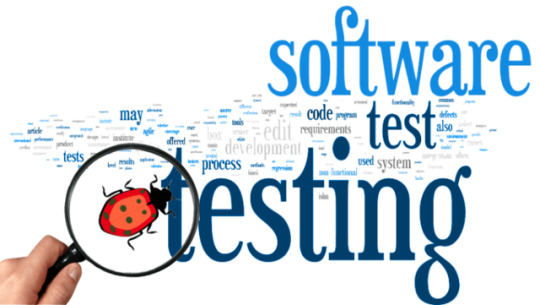
Definitive Guide To Choose The Ideal Test Management Tool
Demands of a modern day digital companies have made organizations to adopt agile methodologies in every part of the software life-cycle. This has, in turn, reflected in testing methodologies to provide higher quality delivery in a short span of time. To achieve this, Test Management tools have been identified to provide critical support to Quality Assurance teams.
The shift towards test management tools has been high in the past few years where more and more testing teams are looking at ways to improve productivity with tools that make their testing process a breeze. The Test Management tools market is capped at $547M out of the $1.8B Application Development and Life-cycle Management (ADLM) tools market, (Source Gartner) with a growth rate of 5%.
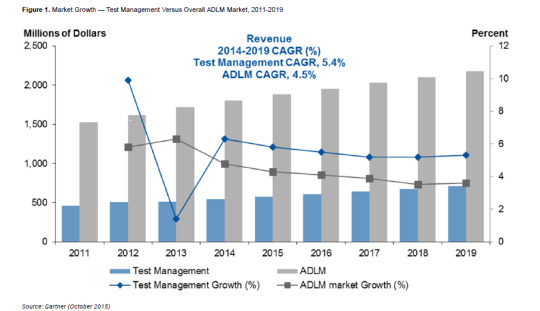
While the shift is progressing there are a lot of companies who are still in the manual phase relying on Word documents and excel sheets to manage their testing process. To ensure we chose the correct tool for Test Management we need to understand the different categories of test management tools and the ways to map our requirements to find the ideal fit.
The current Test Management Market is split across three Categories.
Full Suite Testing Tools
These are enterprise-scale applications used by large testing teams for managing projects of higher amplitude. Majority of the Full Suite vendors provide Test Management as a solution along with a bunch of ADLM tools. The Test Management tools in this category are completely integrated with other ADLM tools available in the suite. Organizations of massive scale with larger development, support, and QA teams can afford and use these tools to match their scale and complexity.
Some of the best examples of this category include:
Silk Central from Microfocus
Quality Center from Microfocus
Rational Quality Manager from IBM
Test Manager from Oracle
Visual Studio Test Professional from Microsoft
Pure Play Testing Tools
The major shift in the Test Management market is happening in this category, where we have tools which are tailor made for testing. In few cases, some of these tools are technology specific; for example, few tools are specially architectured to test mobile apps while the rest are made for web application testing. The major advantages of these tools include
Infrastructure: Most of these tools are self-hosted in the cloud so that customers need not worry about infrastructure and maintenance.
Modern Interface and Architecture: Unlike Full suite vendors who have an interface that resembles legacy systems, modern test management tools provide an intuitive interface bringing all the good aspects of user experience.
Integrations: These tools are built with latest API’s which paves a way to integrate with other third-party software. This means that no matter what tools the current development or the management team uses, these tools are deeply integrated to provide a complete collaboration. For example, Quality Team can log issues in Jira/ Github, Send Slack notifications and Log Hours in Basecamp. This is just the tip of the iceberg with respect to integrations. Since these tools lack the other ADLM tools, which the Full Suite vendors offer, these integrations become all the more critical aspect for their existence.
Pricing : Unlike the heavy licensing fee with Full Suite vendors the Pure Play vendors have flexible pricing options with respect to users, features, and project size.
Some of the vendors in this space include:
QATouch
Testrail from Gurock
TestLodge
TestCollab
EasyQA
Open Source Testing Tools
Similar to every software category, test management tools also have a few Open Source players who have been around for a quite some time. Some of these players have a strong community to support their development. Like every open source software, these tools also have their pros and cons with respect to feature availability and reliability. Smaller QA Teams who have a limited budget in terms of tools usually opt for this category to manage their test cases.
Some of the known vendors in this category include:
Trantula
TestCube
QA Manager
TestLink
Test Master
Now we have an idea of Test Management tool categories, the next step is to understand which tool would be an ideal fit. While there are a lot of tools that are available in the market, the decision to choose the ideal tool should take into account the following considerations.
Development Process
Quality Assurance goes hand in hand with development, hence its critical to understand the development methodology (which includes Agile, Waterfall, or Hybrid) and map it to the right tool that complements the development process.
Application Support
The Testing process differs according to the applications. The testing process for a web application is completely different from that of a mobile app. There are some testing tools which are specific to mobile app testing with SDK integrations. Organizations need to take the app and the environments into considerations before deciding on the tool.
Team Structure
QA teams vary from being a single stand-alone member to large complex teams who need a better collaborative environment to work together. Choosing tools that support or integrate with collaboration tools helps a lot in achieving maximum productivity.
Integration
Modern-day Digital companies rely on a lot of tools for communicating, time tracking, project management, ticket management, and so on. A test management tool that integrates seamlessly with various third-party tools is an amazing value add.
Learning Curve
Test Management tools need considerable a amount of time invested in learning and knowing the ins-and-outs. Tools which are intuitive with a comprehensive knowledge base and community support are easy to learn and adapt.
Cost Structure
Understanding the cost structure and adapting to optimum pricing models helps organization to keep expenses in check and scale in an optimum way.
Migration
Once we have decided to go for a Test Management tool the first hurdle that organizations face is the data migration. Its mandatory for organizations to migrate their data from an existing test management tool or from a spreadsheet into the new tool without any loss or discrepancies. This is to be taken care with paramount importance and the new tool should somehow be open and easy on Data migration.
Once we have covered all these aspects we would have surely had few Test Management tools shortlisted. Hope this blog provided the required information for choosing the ideal test management tool for your organization.
QA Touch has been developed keeping in mind the demands of a modern day Quality Assurance team. Register today for a free plan and let us know if we have made your life easier.
1 note
·
View note
Text
Software Development Unveiled: A Comprehensive Guide
Introduction
Embark on a journey into Software Development, where creativity meets technology to shape the future. In this comprehensive guide, we’ll delve into the intricacies of Software Development, providing valuable insights, tips, and real-world experiences.
Table of Contents
1. The Essence of Software Development2. Navigating the Software Development Lifecycle3. Software Development Methodologies4. The Role of Coding in Software Development5. Trends Shaping Software Development6. Challenges in the Software Development Landscape7. The Art of Debugging in Software Development8. The Impact of Artificial Intelligence on Software Development9. Ensuring Security in Software Development10. Software Development Tools and Frameworks11. Agile vs. Waterfall: Choosing the Right Approach12. Software Development for Mobile Platforms13. Cross-platform Development: Bridging Gaps14. The Human Element in Software Development15. Future Predictions in Software Development16. Harnessing Cloud Computing in Software Development17. IoT and Software Development Synergy18. Software Development and User Experience19. Industry-specific Software Solutions20. Continuous Learning in Software Development21. Balancing Creativity and Functionality in Software Design22. Collaborative Development: Breaking Silos23. Software Development and Business Strategy Alignment24. Overcoming Burnout in Software Development25. The Future Workforce in Software Development
The Essence of Software Development
Software Development is the backbone of technological advancement, driving innovation and shaping the digital landscape. From crafting code to creating user-friendly applications, it’s a dynamic process that blends art and science.
Navigating the Software Development Lifecycle
Understanding the lifecycle is crucial for successful projects. It encompasses planning, design, development, testing, deployment, and maintenance.
Software Development Methodologies
Explore methodologies like Agile and Scrum, each offering a unique approach to project management, ensuring efficiency and adaptability.
The Role of Coding in Software Development
Coding is the language of software. Dive into the intricacies of programming languages and their impact on development.
Trends Shaping Software Development
Stay ahead by exploring emerging trends such as DevOps, AI integration, and low-code development, shaping the future of Software Development.
Challenges in the Software Development Landscape
Uncover developers’ everyday challenges, from tight deadlines to evolving technologies, and strategies to overcome them.
The Art of Debugging in Software Development
Master the art of debugging, a critical skill for developers. Learn practical techniques to identify and fix issues in your code.
The following is a statement about the impact of artificial intelligence on software development.
Discover how AI is revolutionizing Software Development, from automating tasks to enhancing predictive analysis.
Ensuring Security in Software Development
Security is paramount. Explore best practices to safeguard your software against cyber threats and vulnerabilities.
Software Development Tools and Frameworks
Analyze popular tools and frameworks, empowering developers to streamline workflows and deliver high-quality software.
Agile vs. Waterfall: Choosing the Right Approach
Compare Agile and Waterfall methodologies, understanding their pros and cons to select the most suitable approach for your projects.
Software Development for Mobile Platforms
Delve into the nuances of mobile development, addressing challenges and exploring opportunities in the ever-evolving mobile landscape.
Cross-platform Development: Bridging Gaps
“Please explore the advantages and difficulties that come with cross-platform development.” allowing developers to create applications for multiple platforms efficiently.
The Human Element in Software Development
Software is crafted by humans, for humans. Understand the importance of empathy and user-centric design in creating impactful software.
Future Predictions in Software Development
Peer into the future of Software Development, considering advancements in AI, AR/VR, and other technologies.
Harnessing Cloud Computing in Software Development
Enhance scalability, flexibility, and collaboration in your development projects with cloud computing.
IoT and Software Development Synergy
Explore how the Internet of Things (IoT) is reshaping Software Development, connecting devices, and driving innovation.
Software Development and User Experience
User experience is paramount. Learn strategies to create flawless software that provides a delightful user experience.
Industry-specific Software Solutions
Discover software development’s tailored solutions to various industries, addressing unique challenges and requirements.
Continuous Learning in Software Development
Continuous learning is crucial in the constantly changing technology landscape. Explore avenues for staying updated and honing your skills.
Balancing Creativity and Functionality in Software Design
Achieving the perfect balance between creativity and functionality is an art. Learn tips for creating software that stands out.
Collaborative Development: Breaking Silos
Effective collaboration is essential for project success. Explore collaborative tools and practices to break down silos in development teams.
Software Development and Business Strategy Alignment
Aligning development efforts with business strategy is crucial. Understand the symbiotic relationship between development and business goals.
Overcoming Burnout in Software Development
Discover practical ways to combat burnout and maintain a healthy work-life balance while sustaining productivity.
The Future Workforce in Software Development
Explore the evolving landscape of the workforce in Software Development, considering remote work trends and the gig economy.
0 notes
Text
Career Questions for Software Devs/Engineers
Hello,
I am a student looking into the software development/engineering field and am interested in asking currently employed devs/engineers some questions about their life. If your job even loosely relates please feel free to answer. I am just trying to get an idea here.
What are the pros and cons of your career?
If you had a do-over, what path would you take or do differently?
CS, Software Engineering, or another degree?
How stressful is your career compared to school/university?
Are you happy with your current position?
Are you happy with the outlook of your position?
How is your personal life?
How was your starting salary and are you happy with it now?
Any other advice or feedback would be greatly appreciated. Serious answers only please.
submitted by /u/LumpNotTruncate
[link] [comments]
from Software Development - methodologies, techniques, and tools. Covering Agile, RUP, Waterfall + more! https://ift.tt/Yope0xy
via IFTTT
0 notes
Link
The Waterfall methodology has had critics and supporters since its inception, but it remains relevant today even as other methodologies have evolved to account for many of its flaws. If your team is small and your projects are consistent and predictable, then Waterfall could provide the ideal framework for keeping your team organized and on track.
0 notes
Text
ODC VS. FIXED-PRICE CONTRACT: WHICH OUTSOURCING MODEL TO SELECT?
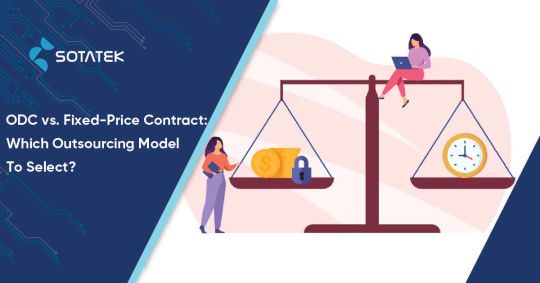
In the cutting-edge technology area, increasing companies require Software Development, be it Website Platforms or Mobile Applications, to meet their work and customers’ demands. However, most businesses lack resources to execute a software project or to afford the cost of development, and in that circumstance, Outsourcing Service is the sound solution to consider. Among various types of outsourcing model, ODC and Fixed-Price Contract are the most popular. To learn more about which one is suitable for your company, let’s look into its methodology as well as pros and cons of each type.
1. The Definition Of ODC And Fixed-Price Contract
a. ODC
ODC, which stands for Offshore Development Centre, is also known as Time and Materials Model. In an ODC model, the payment reflects the actual time spent and resources used in a project. Moreover, an Offshore Development team works as an extension of the clients’ software team, under the guidance of the Clients’ Project Manager. An ODC team would provide the remaining positions needed for a project, ranging from developers, testers to UI/ UX designers, just to name a few. To sum up, in this outsourcing model, the customer plays a greater role in the software development solution and carries all risks related to the scope of work.
b. Fixed-Price
Fixed-Price Contract, or Project-Based Contract, is a model in which success depends much on the outsourcing providers, who would provide a full team from Project Manager to business analyst, Software Developers (backend, frontend, mobile dev, UI/UX designers, manual QA, automation QA (Testers),… to work on a specific project. After catching the idea and concept of the clients, the vendors would arrange meetings and have further discussions to find out the most detailed scope of work and timeline. Generally, the project would adhere to Agile Software Development Services, a way to manage the project by breaking it up into several smaller sections. Each phase often lasts for approximately 2 weeks and the payment would pay immediately after such sprint. If there are any changes related to the scope or schedule, it often translates into an increase in the cost. Therefore, it’s significant to clarify everything before the actual development in order to supply a precise estimation of the software product. By doing so, the Fixed-Price Model can guarantee that the software will be done and delivered within a specific timeframe and budget.
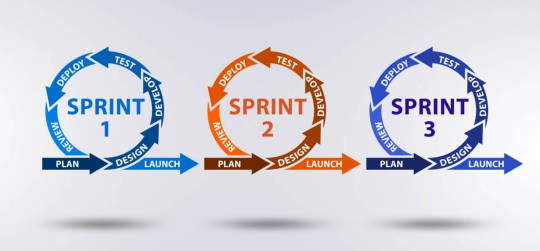
2. Main Benefits And Common Risks Of ODC Outsourcing Model
a. Advantages
Flexibility: Clients are able to make informed decisions during steps of software development, drawing on the outcomes of the previous ones (end-user feedback) and the analysis of the latest market tendencies. Therefore, features can easily be added or removed during the execution process to meet the customer’s expectations. Furthermore, thanks to the flexibility of this outsourcing model, no detailed software development plan is needed, so the project can launch fast as soon as the client and development team agree on the resources involved and contract terms.
Clients’ Full Control of Project Management: In the ODC outsourcing model, project managers from the clients’ side are responsible for the team process, even deciding on which methodology to follow. If you ever ask “How to choose a Software Development Methodology?”, it mainly depends on the project requirements. For example, a project related to Finance and Banking or lasting for a long time is suitable for Waterfall Methodology. Moreover, as clients’ team directly collaborates with the ODC team throughout the project, it can be a promising opportunity for their employers, especially junior-level staffs to learn and improvise. Thanks to this type of project, they can seize a chance to expose themselves to new knowledge from experienced and creative ODC experts as well as apply their theory into practice, which is no doubt beneficial for both themselves and their business in the long term.
b. Disadvantages
Uncertain budget and deadlines: If everything in the Project-based contract is clear at the beginning stage, it is nearly impossible to identify the overall budget and timeline in the ODC outsourcing model. It is no exaggeration to say that the final cost may go beyond the expected budget and so does the release date. Any adjustments to the project can shift the date of the final release and the project can become overdue. Besides, the software development price is approximate, so the clients hardly know how much money they have to spend. Therefore, it is all the Project Managers’ responsibility, who has to manage every step of development in the Time & Materials model closely by applying the KPI for each stage, which regulates the flow of work to stay close to the initial expectation.
3. The Pros And Cons Of Fixed-Price Contract
a. Benefits
Little management efforts: When signing a Fixed-Price Outsourcing model, all responsibilities of the project’s success will be passed down from customers to the outsourcing providers. No matter what problems may come up in the process, be it human errors, technology risks, or economic condition changes, will no longer relate to customers. Instead, it is the suppliers who take charge of it and have to solve it by themselves. Therefore, it can be said that the outsourcing providers take on the majority of the work while customers’ contribution is typically required at the initial and final stages, when requirements are elaborated and when the deliverables are handed over to the receiving party for acceptance. This takes away the pressure on the clients.
Clarity On The Project Outcomes: The Agile Methodology that a Project-based model follows helps to clarify the output of the project. This type of contract requires the supremacy of meeting deadlines and milestones while keeping the scope frozen until the sprint is over. Final acceptance is formalized and based on a number of criteria that the parties agree on in advance. Since Fixed-Price contracts are time-limited and finite, most outsourcing vendors offer a warranty period as a token of confidence in the results of their work.
b. Drawbacks
High cost: The fixed-price estimates are often higher when compared to other outsourcing models, as all foreseeable and likely risks are taken into consideration. If some risks do not play out, the cost will turn into the suppliers’ revenue. It would also become the vendor’s premium in case the project is accomplished faster than expected. However, most clients opting for such contracts are fine with this because it allows them to put precise figures in their budgets and future spending in advance.
Nearly impossible to change: There is almost no room for alternations in each phase of the Fixed-Price Contract. Any changes you may want to introduce further in a project, for example, driven by shifts in market conditions or your business strategy, would require separate negotiation and payment. Therefore, this outsourcing model also leads to a slow project launch because it requires scrupulous preparation, planning, ongoing monitoring, and coordinated actions of everyone involved. The preparation time may take at least several weeks, or even a month depending on the complexity of the project, which is seemingly not suitable for a project catching trends.

4. A Fixed-Price Outsourcing Model or ODC?
In conclusion, every coin has two sides and ODC, as well as Fixed Price Contract, are not the exception. Both have pros and cons which require you to think twice before choosing. If your team has a clear understanding of your project and limited price, it is recommended to collaborate with the Outsourcing providers for a Fixed Price contract. However, the ODC model would be better in case the project is quite flexible and requirements tend to change frequently.
If you wonder “Are there any Software Development Companies near me?” or “How to find the best Software Outsourcing Service?”, feel free to leave us a massage. We have 2 main outsourcing models for clients, including Offshore Development Centre (ODC) and Project-based, depending on specific requirements. With our creative experts, who have 10 years of experience in software development and consulting, we, SotaTek, are confident to provide you with Web & Mobile App Development with the latest trend in any area, be it Healthcare, Education, Real Estate or Finance industry.
0 notes